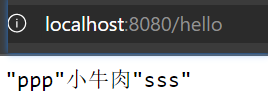Spring Boot 自定义 starter
🎨 自定义 starter
💡 分析完了源码以及自动装配的过程,我们可以尝试自定义一个启动器
1. 说明
启动器模块是一个 空 jar 文件,只用来做依赖导入,我们需要专门来写一个自动配置模块,启动器依赖自动配置。使用时只需要引入启动器 starter 即可。
命名归约:
官方命名:
- 前缀:
spring-boot-starter-xxx - 比如:
spring-boot-starter-web....
自定义命名:
xxx-spring-boot-starter- 比如:
mybatis-spring-boot-starter
2. 编写启动器
1)在IDEA中新建一个空项目 spring-boot-starter-mydiy
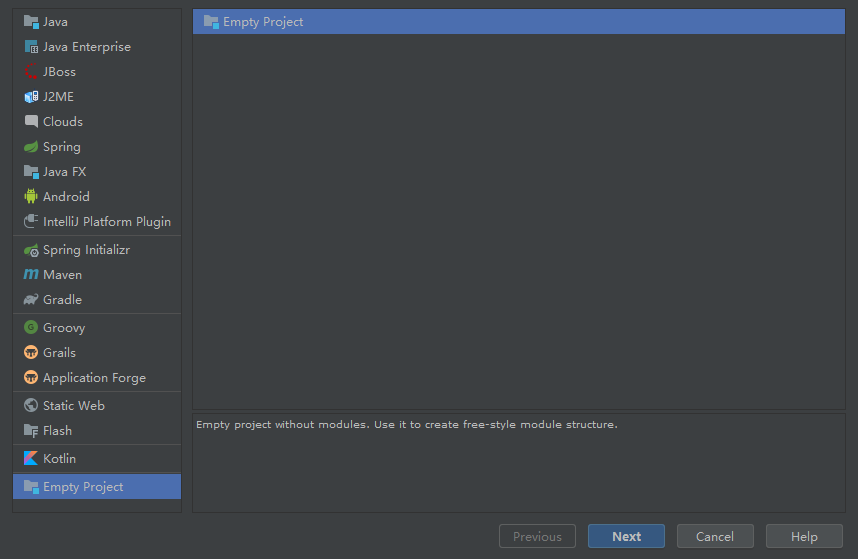
2)在该项目中新建一个普通 Maven 模块:smallbeef-spring-boot-starter 启动器模块
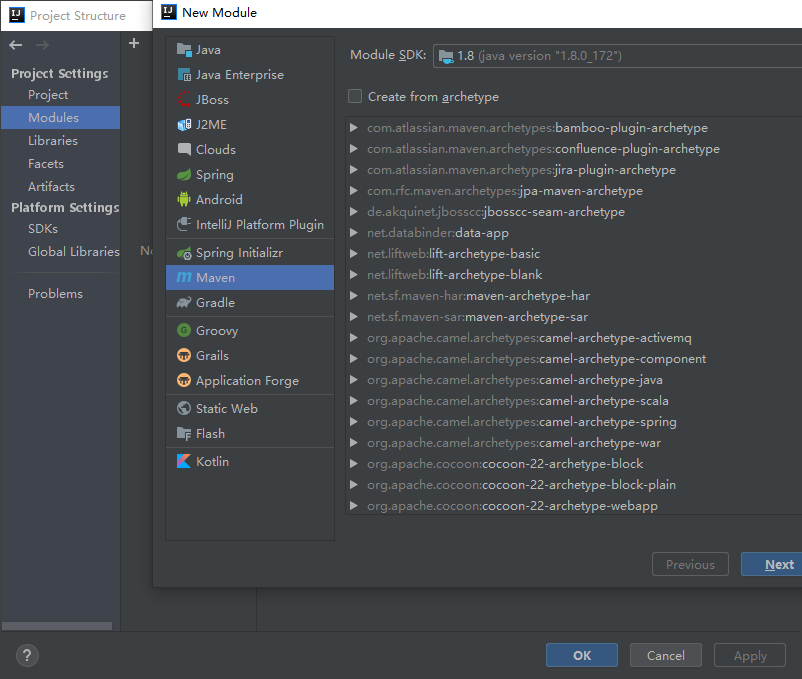
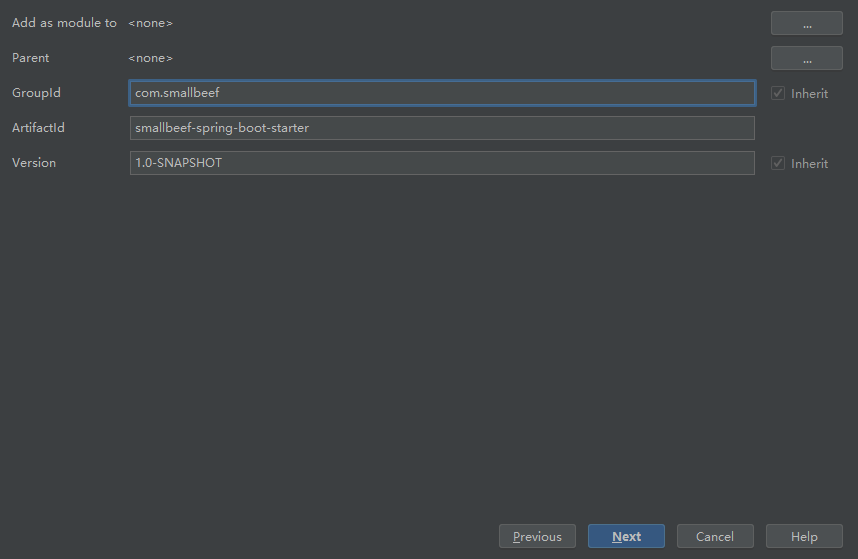
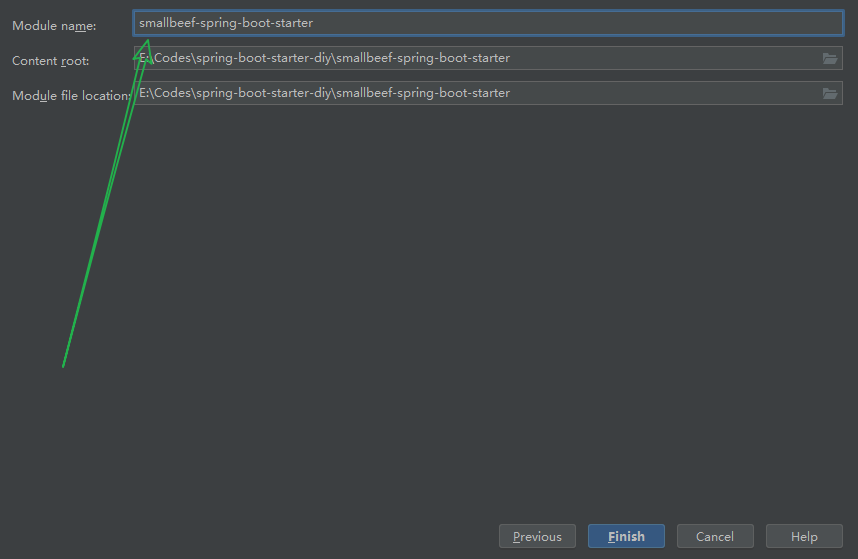
3)然后,再在该项目中新建一个 Springboot 模块:smallbeef-spring-boot-starter-autoconfigure 自动配置模块
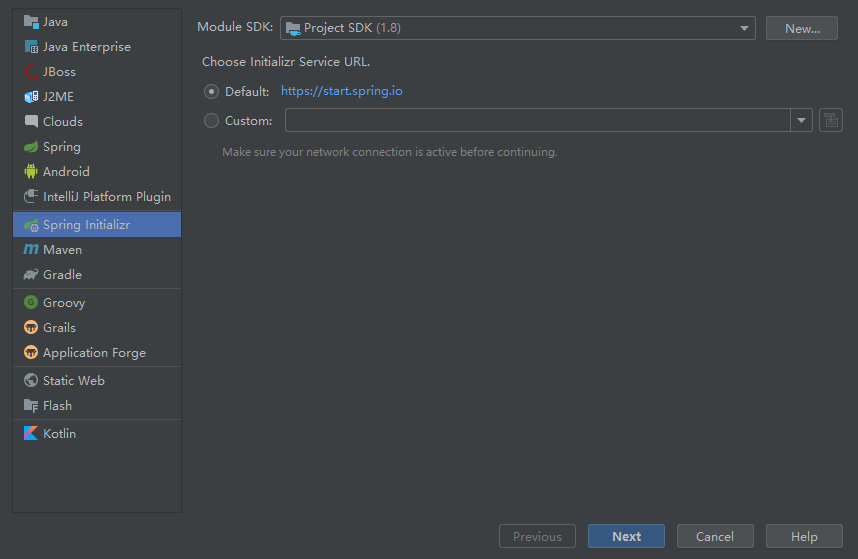

4)点击 Apply,基本结构如下:
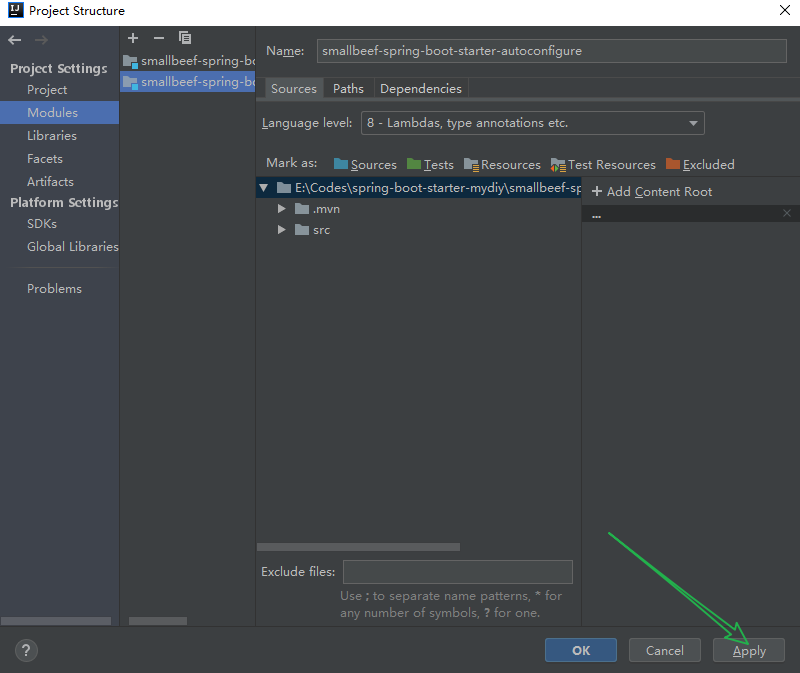

5)在启动器 starter 模块中自动配置autoconfigure 模块的依赖:
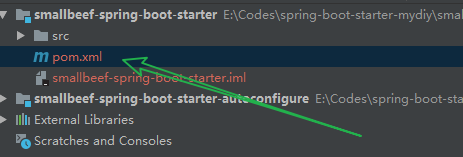
<!-- 启动器 -->
<dependencies>
<!-- 引入自动配置模块 -->
<dependency>
<groupId>com.smallbeef</groupId>
<artifactId>smallbeef-spring-boot-starter-autoconfigure</artifactId>
<version>0.0.1-SNAPSHOT</version>
</dependency>
</dependencies>
6)将 autoconfigure 项目下多余的文件都删掉(包括 test 文件夹、配置文件、启动类等),pom.xml 中只留下一个 starter,这是所有的启动器基本配置:
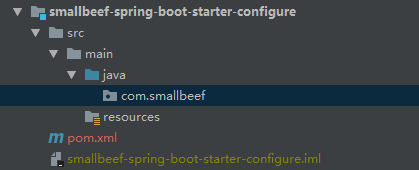
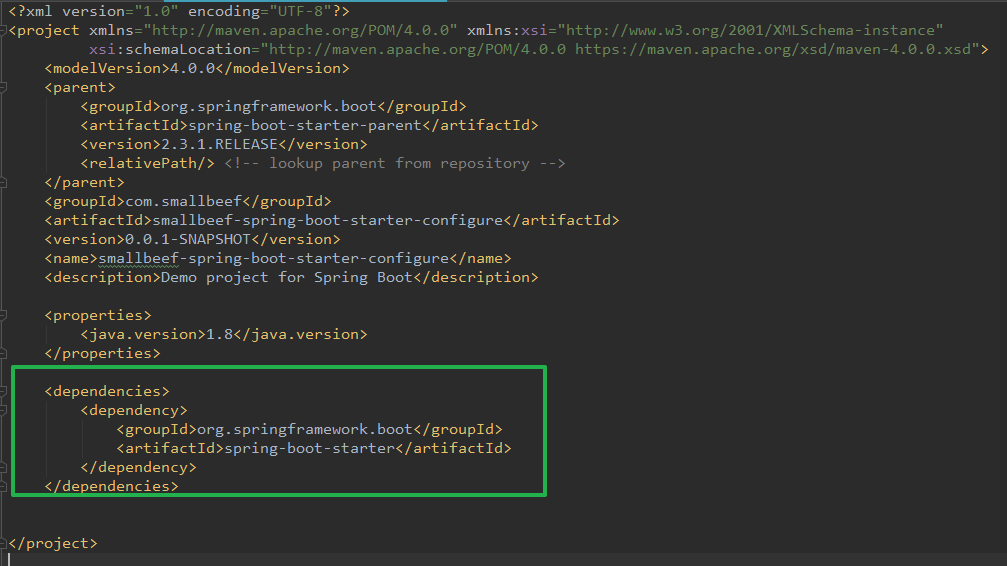
7)在 autoconfigure 中编写一个自己的服务:
package com.smallbeef;
public class HelloService {
HelloProperties helloProperties;
public HelloProperties getHelloProperties() {
return helloProperties;
}
public void setHelloProperties(HelloProperties helloProperties) {
this.helloProperties = helloProperties;
}
public String sayHello(String name){
return helloProperties.getPrefix() + name + helloProperties.getSuffix();
}
}
8)编写 HelloProperties 配置类
package com.smallbeef;
import org.springframework.boot.context.properties.ConfigurationProperties;
// 前缀 smallbeef.hello
@ConfigurationProperties(prefix = "smallbeef.hello") // 绑定相关配置
public class HelloProperties {
private String prefix;
private String suffix;
public String getPrefix() {
return prefix;
}
public void setPrefix(String prefix) {
this.prefix = prefix;
}
public String getSuffix() {
return suffix;
}
public void setSuffix(String suffix) {
this.suffix = suffix;
}
}
9)编写自动配置类并注入bean
package com.smallbeef;
import org.springframework.beans.factory.annotation.Autowired;
import org.springframework.boot.autoconfigure.condition.ConditionalOnWebApplication;
import org.springframework.boot.context.properties.EnableConfigurationProperties;
import org.springframework.context.annotation.Bean;
import org.springframework.context.annotation.Configuration;
@Configuration
@ConditionalOnWebApplication // 如果时 web 应用则配置生效
@EnableConfigurationProperties(HelloProperties.class) // 使得 HelloProperties 生效
public class HelloServiceAutoConfiguration {
@Autowired
HelloProperties helloProperties;
@Bean
public HelloService helloService(){
HelloService service = new HelloService();
service.setHelloProperties(helloProperties);
return service;
}
}
10)自动配置类若要能加载,则必须配置在 resources 文件夹下的 META-INF\spring.factories 文件中
# Auto Configure
org.springframework.boot.autoconfigure.EnableAutoConfiguration=\
com.smallbeef.HelloServiceAutoConfiguration
11)编写完成后,安装到 maven 仓库中:
🚨 注意先安装 autocongifure,因为启动器 starter 依赖于 autoconfigure
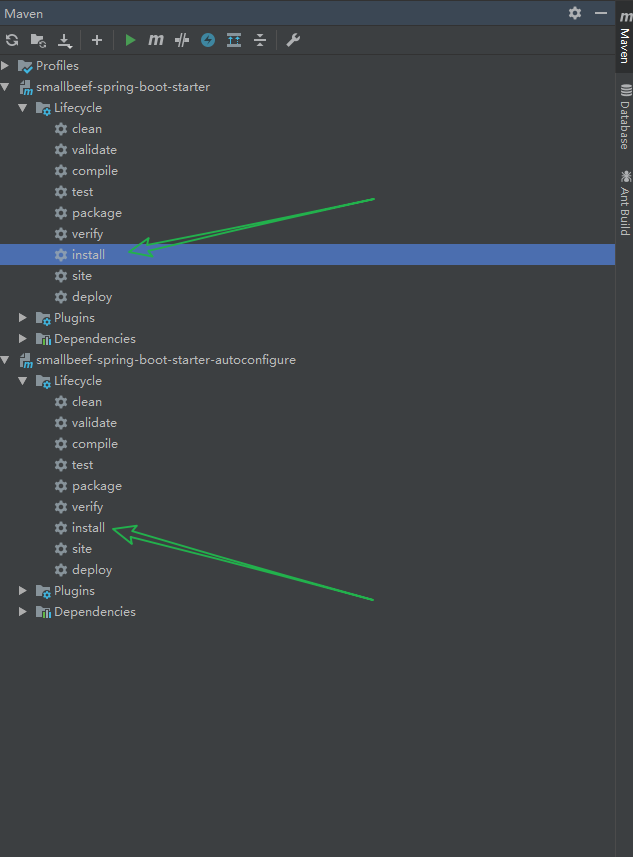
3. 测试自定义启动器
1)新建一个SpringBoot 项目,注意需要导入 Web 模块,因为我们在自动配置类中配置了 @ConditionalOnWebApplication 只有在 Web 应用中配置类才生效
2)导入我们自己写的启动器
<dependency>
<groupId>com.smallbeef</groupId>
<artifactId>smallbeef-spring-boot-starter</artifactId>
<version>1.0-SNAPSHOT</version>
</dependency>
3)编写一个 HelloController 测试我们自己的写的接口:
package com.smallbeef.controller;
@RestController
public class HelloController {
@Autowired
HelloService helloService;
@RequestMapping("/hello")
public String hello(){
return helloService.sayHello("小牛肉");
}
}
4)编写配置文件 application.properties
smallbeef.hello.prefix="ppp"
smallbeef.hello.suffix="sss"
5)启动项目进行测试:
